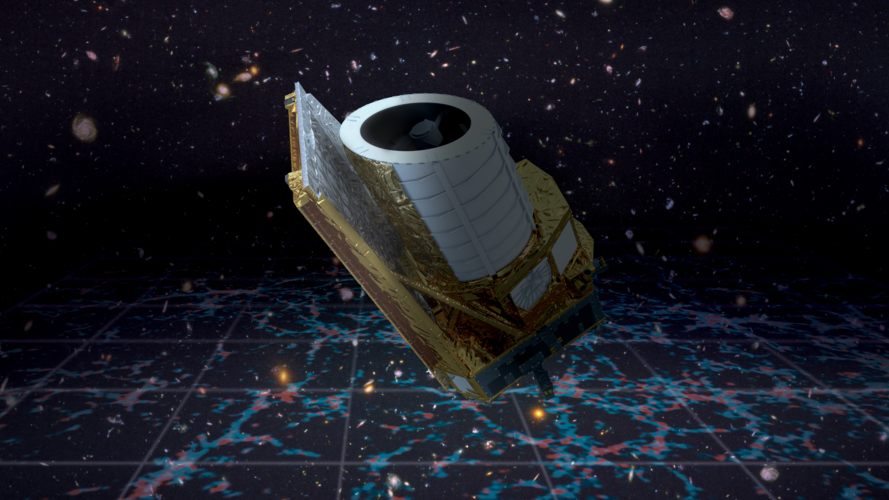
Copernical Team
Smiles, thumbs ups and a safe return for 'stranded' NASA astronauts
 Home at last: After an unexpected nine-month stay in space, a pair of NASA astronauts finally returned to Earth on Tuesday, concluding a mission that captured global attention and became a political flashpoint.
A SpaceX Crew Dragon spaceship carrying Butch Wilmore and Suni Williams - alongside fellow American Nick Hague and Russian cosmonaut Aleksandr Gorbunov - streaked through the atmosp
Home at last: After an unexpected nine-month stay in space, a pair of NASA astronauts finally returned to Earth on Tuesday, concluding a mission that captured global attention and became a political flashpoint.
A SpaceX Crew Dragon spaceship carrying Butch Wilmore and Suni Williams - alongside fellow American Nick Hague and Russian cosmonaut Aleksandr Gorbunov - streaked through the atmosp Sidus Space launches third LizzieSat satellite with enhanced onboard AI
 Sidus Space has confirmed the successful launch and deployment of its LizzieSat-3 satellite into Low Earth Orbit (LEO), reinforcing the company's growing multi-satellite network. This latest satellite was launched on March 14th aboard SpaceX's Transporter-13 rideshare mission from Vandenberg Space Force Base in California. LizzieSat-3 now joins its predecessors, LizzieSat-1 and LizzieSat-2, whic
Sidus Space has confirmed the successful launch and deployment of its LizzieSat-3 satellite into Low Earth Orbit (LEO), reinforcing the company's growing multi-satellite network. This latest satellite was launched on March 14th aboard SpaceX's Transporter-13 rideshare mission from Vandenberg Space Force Base in California. LizzieSat-3 now joins its predecessors, LizzieSat-1 and LizzieSat-2, whic What to know about the satellite communications race
 Elon Musk's SpaceX subsidiary Starlink is the most widely-known firm offering satellite communications, but the sector is the scene of hot competition between several groups.
Depending on their technology, different players can offer widely varying capacity and applications for connectivity via space.
From their orbits around the Earth, satellites serve as "relays between one point on th
Elon Musk's SpaceX subsidiary Starlink is the most widely-known firm offering satellite communications, but the sector is the scene of hot competition between several groups.
Depending on their technology, different players can offer widely varying capacity and applications for connectivity via space.
From their orbits around the Earth, satellites serve as "relays between one point on th Follow the reveal of Euclid’s first catalogue on 19 March

The European Space Agency is releasing the first catalogue of astronomical data from the Euclid space telescope, including three new enormous image mosaics with zoom-ins. Follow the reveal live on Wednesday 19 March at 11:00 BST / 12:00 CET.
Euclid is back – 26 million galaxies and counting
 Video:
00:06:44
Video:
00:06:44
The European Space Agency’s Euclid mission has scouted out the three areas in the sky where it will eventually provide the deepest observations of its mission.
In just one week of observations, with one scan of each region so far, Euclid already spotted 26 million galaxies. The farthest of those are up to 10.5 billion light-years away.
In the coming years, Euclid will pass over these three regions tens of times, capturing many more faraway galaxies, making these fields truly ‘deep’ by the end of the nominal mission in 2030.
The first glimpse of 63 square degrees of the sky, the
Euclid opens data treasure trove, offers glimpse of deep fields

On 19 March 2025, the European Space Agency’s Euclid mission released its first batch of survey data, including a preview of its deep fields. Here, hundreds of thousands of galaxies in different shapes and sizes take centre stage and show a glimpse of their large-scale organisation in the cosmic web.
From pebbles to planets
 Image:
From pebbles to planets
Image:
From pebbles to planets ICESat-2's Laser Fires 2 Trillionth Shot, Spots Clouds
 Happy 2,000,000,000,000th, ICESat-2! NASA's Earth-observing laser in orbit passed a milestone on March 9 at 12:51 p.m. EDT - 16:51:00.268 UTC, to be precise - as its laser instrument fired for the 2 trillionth time and measured clouds off the coast of East Antarctica.
ICESat-2's instrument, the Advanced Topographic Laser Altimeter System (ATLAS), uses rapid pulses of green laser light and
Happy 2,000,000,000,000th, ICESat-2! NASA's Earth-observing laser in orbit passed a milestone on March 9 at 12:51 p.m. EDT - 16:51:00.268 UTC, to be precise - as its laser instrument fired for the 2 trillionth time and measured clouds off the coast of East Antarctica.
ICESat-2's instrument, the Advanced Topographic Laser Altimeter System (ATLAS), uses rapid pulses of green laser light and 'Microlightning' in water droplets may have sparked life on Earth
 Life may not have begun with a dramatic lightning strike into the ocean but from many smaller "microlightning" exchanges among water droplets from crashing waterfalls or breaking waves.
New research from Stanford University shows that water sprayed into a mixture of gases thought to be present in Earth's early atmosphere can lead to the formation of organic molecules with carbon-nitrogen b
Life may not have begun with a dramatic lightning strike into the ocean but from many smaller "microlightning" exchanges among water droplets from crashing waterfalls or breaking waves.
New research from Stanford University shows that water sprayed into a mixture of gases thought to be present in Earth's early atmosphere can lead to the formation of organic molecules with carbon-nitrogen b NASA Super Pressure Balloons Return to New Zealand for Test Flights
 NASA's Scientific Balloon Program has returned to Wanaka, New Zealand, for two scheduled flights to test and qualify the agency's super pressure balloon technology. These stadium-sized, heavy-lift balloons will travel the Southern Hemisphere's mid-latitudes for planned missions of 100 days or more.
Launch operations are scheduled to begin in late March from Wanaka Airport, NASA's dedicated
NASA's Scientific Balloon Program has returned to Wanaka, New Zealand, for two scheduled flights to test and qualify the agency's super pressure balloon technology. These stadium-sized, heavy-lift balloons will travel the Southern Hemisphere's mid-latitudes for planned missions of 100 days or more.
Launch operations are scheduled to begin in late March from Wanaka Airport, NASA's dedicated 